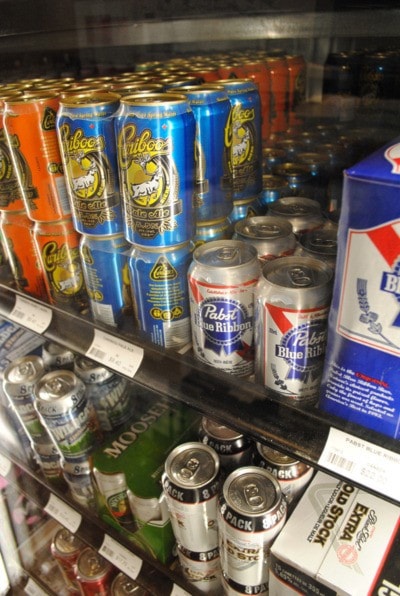When it comes to who gets your dollar, experts say there’s still a market for beer’s underclass
Craft-toria. It’s every beer lover’s delight, and not exactly where you expect to raise a glass of Buck-A-Beer — or is it?
Despite the overflow of Victoria’s microbrew culture, no-name brewskies and mass-produced ales still find their spot on liquor store shelves around town. And while their popularity is stumbling, locals prove there is still room in our glass for them, at least for now. But when it comes to making the decision between quality and price, beer experts are seeing a trend that has surprised many: even some of the city’s youngest and stingiest drinkers are selecting local craft beer when it counts.
“The days of Labatt Blue are over. Literally, we have a whole Labatt generation dying out, and now we see these 19-year-olds come in, and they are buying Phillips and Driftwood,” says Lon Sheehan, the Strath Liquor Store’s beer specialist. “The real difference between ‘craft’ versus ‘crap’ beer for me, though, is not whether it was made by a mega or micro brewery — it’s whether they used craft ingredients or not.”
When it comes to those ingredients, Sheehan points out that there are only four main components in beer: water, malt, hops and yeast. Germany, for example, has a 500-year-old law about what can really count as beer. Budweiser, on the other hand, has been known to use corn syrup.
Location matters, too. Stella in Belgium is an entirely different drink, ingredients-wise, than the Stella we buy in Canada, Sheehan says. And each brew-popular country has its own cap on part of the market: Belgium specializes in yeast, the U.K. in malt, the Pacific Northwest in hops and Germany has mastered the balance.
Even mass producers can’t drink away the knowledge that craft is where it’s at. In 2011, Sheehan reports, mega market beer sales were down 10 per cent, while craft sales had risen 10 per cent. At the Strath Liquor Store, 60 per cent of sales and fridge space is dedicated to craft brews, with mid-class beers scoring 25 per cent and the cheapies filling up just 15 per cent.
Producers’ tactics to deal with this, however, are mixed: fold, resign into the “value beer” market, join the craft industry, or at least make it look that way. For example, Labatt has managed to harness the cheap beer niche in sales, says Sheehan. Meanwhile, Molson’s Richard’s White, a mid-class beer in Canada, is rebottled into “craft shape” and re-labelled as Blue Moon in the U.S., where it sits alongside craft brews.
“What we’re seeing from these companies, like Coors, is that they are starting to tailor their products to people who don’t really like beer,” says Sheehan. “We’ve got ice teas and berry mixes and ‘refreshment beverages’ because they know they’ve lost the market. They can’t come up with the product that real beer drinkers are looking for.”
So who is still buying the cheap cans? More people than you might expect — and it still comes down to price point.
“We see a surprising number of people come in and buy Fat Tug, say, and a six-pack of whatever,” Sheehan says. “What does it mean? It means, ‘Yeah, I like real beer, but after a few I just want to get fucked up.’” M
